
Panasonic GX1 vs Olympus E-P3 – Part 1 – Basics and High ISO
Over the next few days I am going to be posting a series of “comparison” tests pitting the new Panasonic GX1 against the Olympus E-P3. I have both here side by side and all of you know I LOVE the Olympus E-P3 but I also know it has an aging sensor and the GX1 has the latest and greatest from Panasonic inside that should be giving better everything. But HIGH ISO is not the be all end all for many of us, including me because quite frankly, I rarely shoot in higher ISO’s. BUT many of you do so this 1st test will put the two cameras against each other in the high ISO department as this has been the most requested comparison between these two cameras.
ISO performance doest tell the whole story. Olympus PEN cameras are much loved for their out of camera color and JPEG quality and the E-P3 is the best of the PEN’s to date so this should be interesting to see how it stacks up against the GX1. The pricing is the same at $799 each with kit lens. The Panasonic is smaller and thinner than the meaty and solid E-P3, but the GX1 feels pretty good with the included rubbery grip. Still, I prefer the slightly larger E-P3 in my hand.
The E-P3 has a 12Mp sensor. The same sensor used in the E-P2 and E-P1. The GX-1 has a new 16MP sensor from Panasonic that has gotten rave reviews already as it is in the Panasonic G3. The LCD on the E-P3 is, in my opinion, better. It is higher resolution and an OLED display. It looks really good. The E-P3 also has in body IS, the Panasonic relies on the lenses. Many will prefer the Panasonic menu system, while others may prefer the Olympus as it has come a long way since the E-P1 days. I also prefer the scroll thumb wheel on the E-P3 over the cheaper feeling dial of the GX1. I am looking forward to this comparison to see which one will deliver the more pleasing images.
To read my full Olympus E-P3 review you can click HERE. My GX1 review will be posted soon. Even with all of these upcoming comparisons, one thing is for sure. Either of these cameras are capable of taking fantastic images.
Over the next few days and next week I will post the rest of the comparisons. So check back to see the results.
Part 2: Out of camera JPEGS and Color. White balance, ISO up to 800, and more.
Part 3: Sharpness and Detail/RAW performance – 16MP vs 12MP
Part 4: – Auto focus speed/accuracy and overall usability
Part 5: – Video Performance and final conclusion between these two cameras.
For today I am taking a look at the HIGH ISO performance of these cameras. Take a look below and check it out.
Click the images for the full size image from RAW. No adjustments were done. This was strictly a NOISE/HIGH ISO test, not sharpness.
First up the GX1 at ISO 1600 from RAW – No Noise Reduction at all – Click image for full size file
–
The same image with the E-P3 – ISO 1600, From RAW, no NR and yes, same lens was used for both
–
The GX1 is cleaner, and did better with the Auto White Balance. Here are the crops if you do not want to download the full files
–
[ad#Adsense Blog Sq Embed Image]
Now let’s move on the ISO 3200…
First is the full GX1 16MP file at ISO 3200 – Indoor, low light. – Click the image for full size
Below is the full size file from the Olympus E-P3 at ISO 3200 – For BOTH files Noise Reduction was OFF, as in NO NR at all during the RAW conversion. This is so we can see how each sensor is really performing in regards to noise.
–
and some crops. 1st from each of the files above
1st the GX1, then the E-P3 and then the GX-1 resized to 12MP to match the GX1. Clearly the GX1 is giving better high ISO performance, which makes sense since the sensor is newer.
–
–
–
ISO 6400 comparison
GX1 – 6400 – from RAW – NO NR
–
E-P3 – ISO 6400 – NO NR – From RAW
–
and the crops
So there you go. It is clear that the GX1 easily beats the E-P3 when it comes to HIGH ISO. It also appears that the auto WB did better with the GX1 here as well. If you shoot in low light and high ISO, the GX1 will give you the best performance in regards to noise.

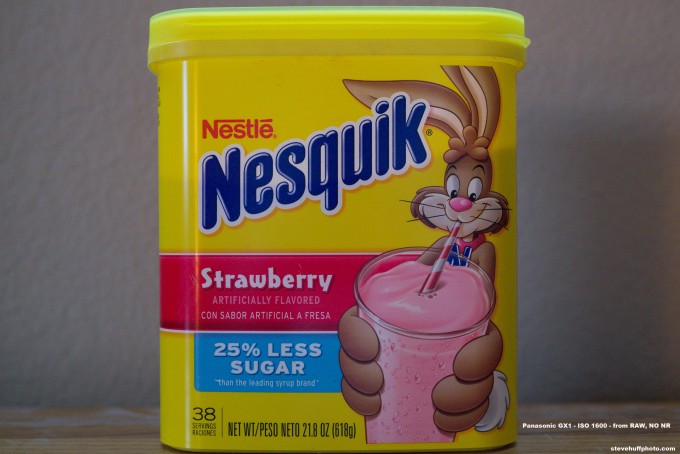
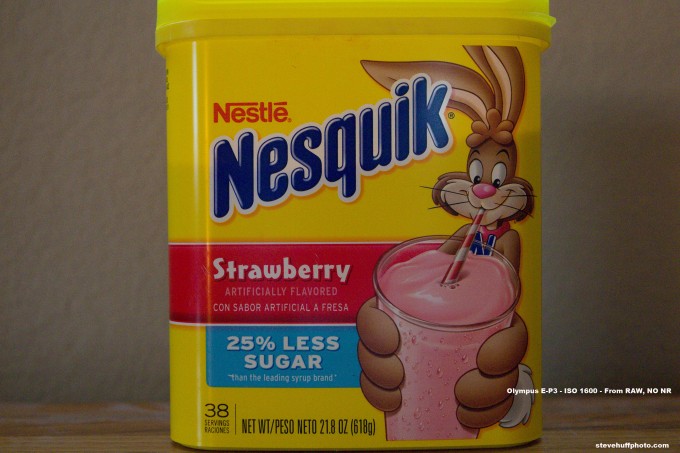


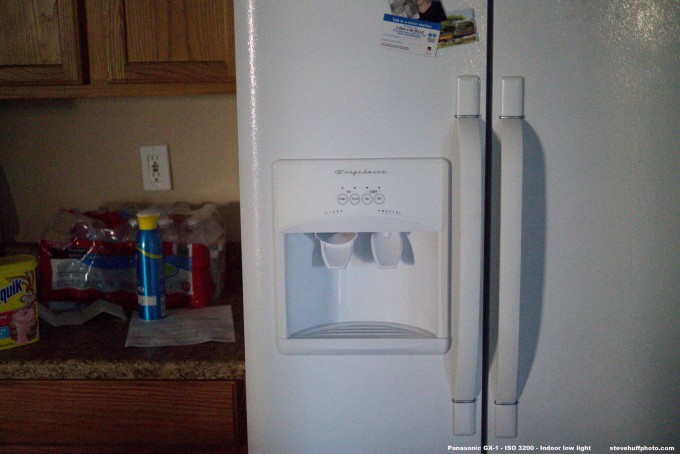
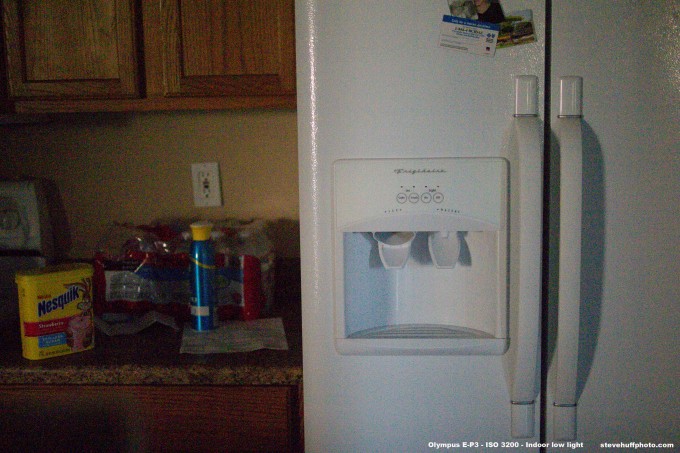
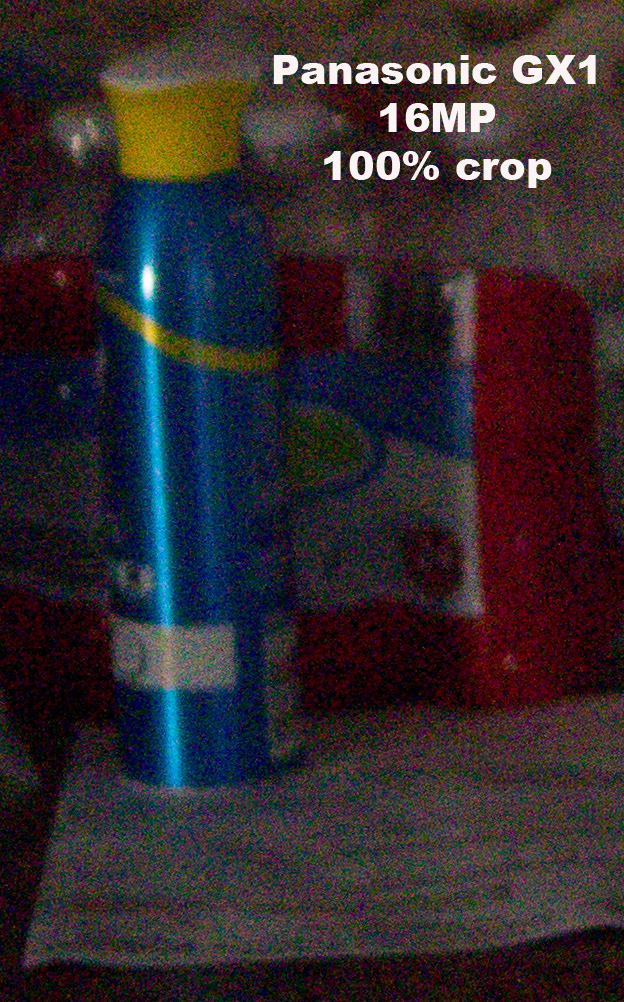
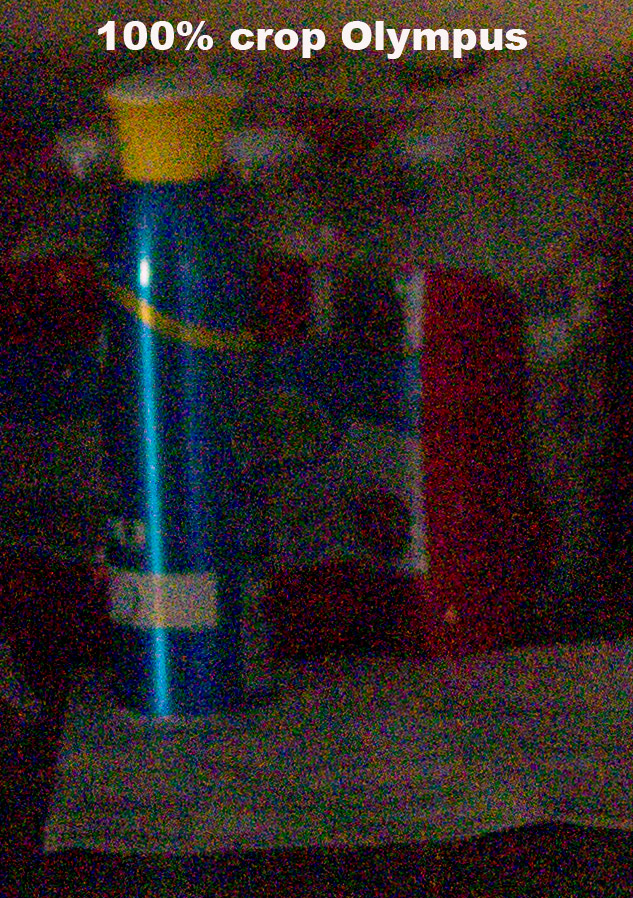
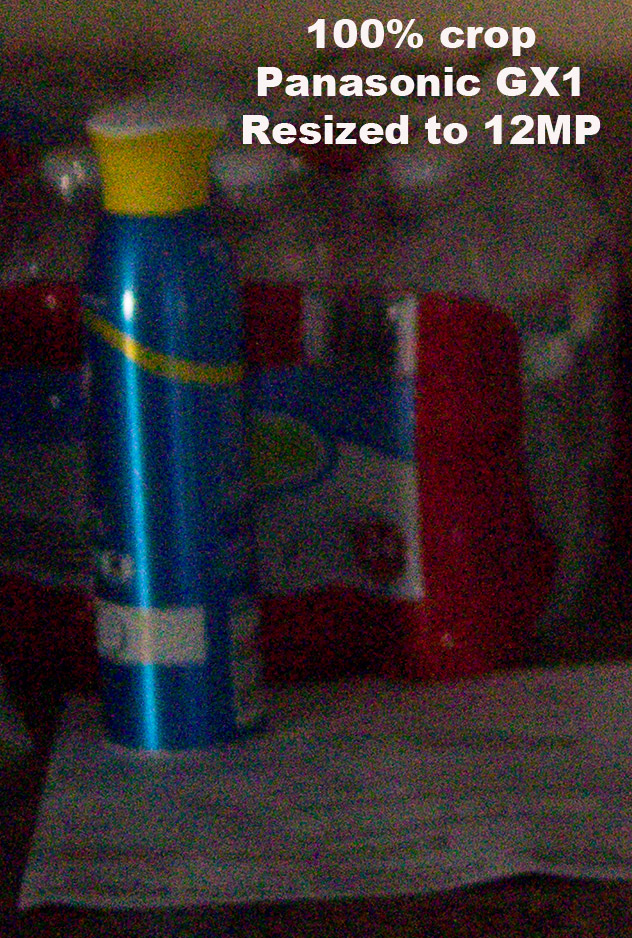
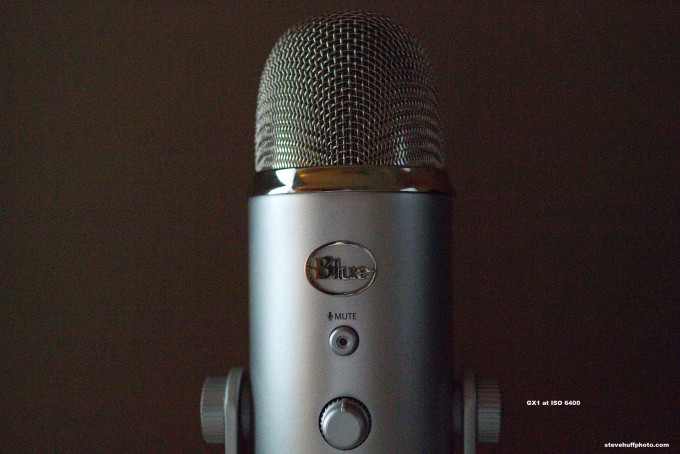
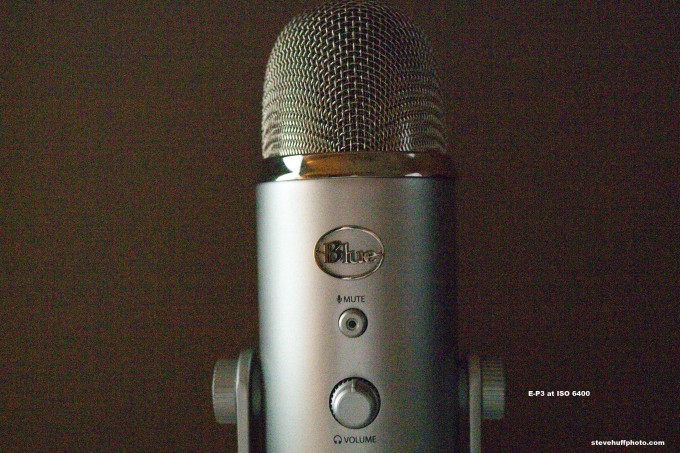
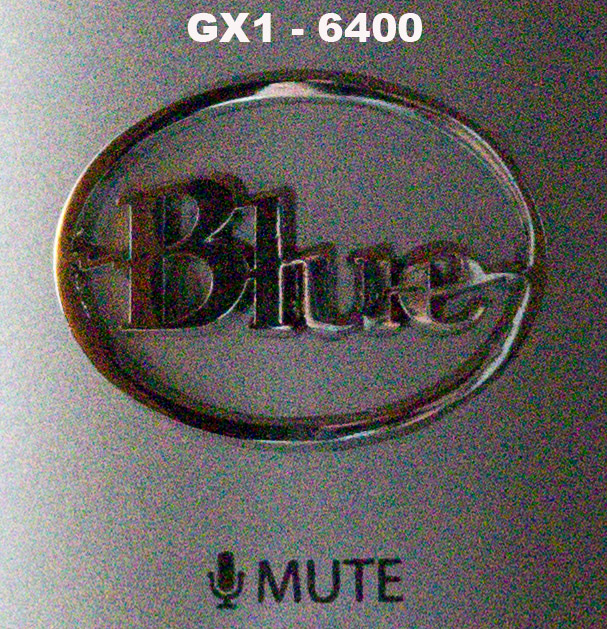
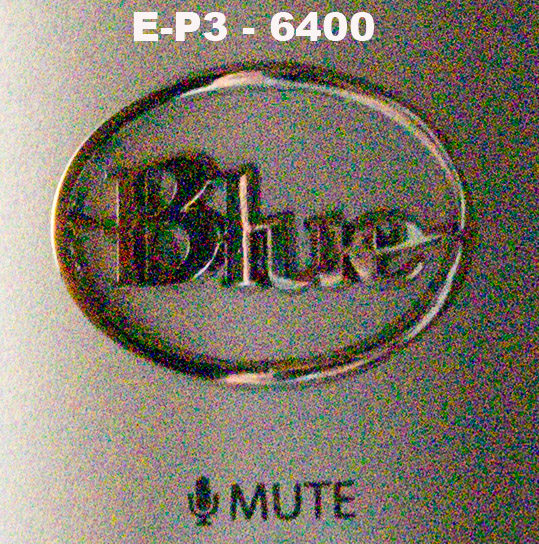

you all waste your time. Today, a camera is considered to be good only if the iso 25600 shot is clean. This has to be proven by several testing reviews, the TV has to announce it, and your doctor has to confirm it on your next visit. We call that the useless media brainwash. Go back in time and look all the excellent shots made when ISO useable limit was 400 and all beyond was Utopia. I shoot a BNEX-7, seldom go beyond 800 ISO and bought that camera because it brings me 53 years back in time when I touched my first Ashahi double lens 6×6 and my Praktica 24×36. I was 9 years old. The Nex allows mt to have digital with old fashion shooting style, manual focusing, use of just any lens. But, as Steve says, who shoot 6400 ISO. A good tripod weights 350 grams today. If I look at the shots from my D70, the first digital slr I had, I still say to myself, “what amazing shots that camera made”. I still have a D40 with same sensor, and for the usual family album, it’s the right workhorse.
It is fun to read your articles where you refer to your E-P3 as often as you do as though you are protecting a loved one from feelings of low self esteem. I am a big fan of Olympus and have been since I bought a C8080WZ years ago. I have owned several different E series 4/3rds bodies and still use an E-3 with SHG glass today.
I recently ordered a GX1 which should arrive any day now.
I enjoy the flavor you add to your articles when you talk about the way the E-P3 speaks to your heart and the GX1 speaks perhaps to the soul.
Keep up the fun and the enjoyable style with which you write. I really like the site and will come by often to read the opinions and articles posted here.
Dan Ferrall
Portland, Oregon
Portland Photographic
Hi Steve,
What type of lighting were turned on while this low-light comparison?
Normal indoor room lighting. I do NOT use any studio lights because I feel that is an invalid way to test high ISO. When do most of us use higher ISO? When the lights go down right? I mean, I wouldn’t be shooting in a studio with high ISO so shooting test shots with studio lighting would be silly. These are all just in my office or kitchen with normal house lights. No window light and no studio lights. ISO performances of cameras go down as the lights go down, so by testing indoor I get a better idea of what to expect when I need higher ISO, which is usually when shooting indoor or lower light situations.
I love that the test photo you took of the mic is a ‘blue’ microphones ‘yeti’ great mics! Love blue mics in my studio! You have good taste Steve!!
Sorry for the random comment. 😉
Thanks Josh! Love the Yeti!
firstable, excuse me for my bad English, i’m French 😉
i agree with retow, please Panasonic, sell your last sensor to Oly 😉
Steve, in my country, our best press magazine “Chasseur d’images” have made a comparative test between compacts sensors, V1 sensors and Pen & Nex5n sensors in tems of quality.results are:
1: Sony Nex 5n 2:Oly EPL3 3:V1 4:compact (Pentax Q)….
usually, the are a little bit more “pro” Nikon than “pro” Oly , but verdict is clear: sensor size=quality !
more details appears (crop of a cat photography) in the Oly, it’s clear.
so, V1 is better for you because of a number of another things ? or pure sensor quality is far beyond Oly?
thanks reading my poor English 😉
So Panasonic, please give that sensor to Olympus. And to Olympus: bring us the EP4 with the 16MP sensor, Oly jpeg engine and colors, integrated EVF as the NEX7 has and tilt screen. But keep form factor and size at the EP3 level. And as I’m completing my wish list, bring the EP4 as a kit with a 20mm f1.4 (or close) prime lens built the same way the fantastic 12mm is. I think I might sell all of my other gear for such a met system, ok, except my M9.
Thank you for doing this comparison. I am currently weighing up the CSC options as a secondary use system next to my DSLR, and I’m having the hardest time deciding between the Nikon J1/V1, Panny GX1, Oly E-P3, and the NEX-5N/7.
As I see it, they all have their pros and cons (as someone who cares about still photo and video quality almost equally). The NEXes have the best still image quality, but the weakest lens lineup for me since I would need small lenses, something Sony doesn’t do very well at all (crazy considering the demand for them, NEX users seem to be crying out for a decent range of small primes for the E-mount). The Nikon 1 series seems to be great for video and has awesome autofocus and high-speed shooting abilities, but the lens lineup is limited and the small sensor means shallow DOF isn’t really possible. The Oly and Panny are pretty much tied for the lead considering the wide range of lenses available for the MFT system, with the E-P3 having the better LCD screen and JPEG processing, and the GX1 better high ISO performance and newer, higher resolution sensor.
At the moment I feel I’m leaning towards the GX1 simply because it has the fewest compromises – it seems to do everything pretty well, even if it doesn’t excel in any one area, but part of me really wants to just dump a load of money on an NEX-7 and screw the portability of the system, hoping Sony releases some smaller lenses in the future. They really seemed to have nailed the performance and handling/UI on that camera, it’s just a shame they can’t back it up with the lens selection.
While the GX1 high ISO shorts are clearly cleaner than those of the E-P3, the greenish cast on yellow objects from the GX1 shots (especially the first one) is still too obvious.
Hi Steve
Thank you as always for posting.
I would love to see a Nex-5n or Nex-7 ISO comparison in your final review.
Or maybe one of your “crazy” shoot offs 🙂
Hope your enjoying the holidays.
am
watching with interest as i dont own any 4/3 cameras, only dslr’s and bought a D7000 as a P&S 🙂 , BUT in the market……in my thoughts i have said, sell all my pro gear, bodies, lenses, flashes etc…and buy one of each… a Nex7, EP3, GX1, V1 with the decent primes and i could still bank thousands and enjoy photography…..or am i thinking this way because i hit the big 50?………..anyhows continue Steve, cheers
I know you don’t have the G3, but do you think it would perform just as well in these same situations vs the GX1, or is the updated processor, color(jpeg and wb) algorithm doing a better job? Your test has be yearning to get the GX1 as an upgrade to the G2, but as you noted lack of EVF(and lesser extend articulated display) has me thinking not to yet.
I have both and the G3 performs about the same as the GX1. Neither sensor will compete against the NEX, but the MFT lenses are superior. The G3 performs much better than the G2.
Thanks for testing out the raw files first. I’d like to see a dynamic range test on raw files too please. I like the size of m43 cameras and and ok with the noise levels in my Pen but for me I would love more dynamic range.
Which lens was used in this test?
Panasonic 25 1.4
Very interesting test,
now it would be nice to see the difference between EP3 + IBIS VS the GX1.
I understand that then it may be ISO 800 VS 3200 if IBIS makes you gain 2 stops.
Thanks 🙂
very nice review! I just saw this camera in the store yesterday and read your review. I think I will choose this camera for mobility.
I wish the Panasonic GX1 had in-body image stabilization. I have an Olympus E-5 it has the same old sensor at the E-P3 but the I.S. combined with the older Panasonic “Leica” 25mm 1.4 really helps in low light.
Steve, any high level thoughts about the GX1 versus the V1? I am currently evaluating a V1 but if I decide to return I must return soon. Thanks for your reviews.
Well, I love the V1. Its tough though because I also love these new M4/3 lenses. I get more consistent results from the V1 system, better OOC color, sharper images, faster AF, better AF tracking, and LOVE the EVF. So for me, I will stick with the V1 but it would be cool to own one of each if I could afford it. Something like a GX1 or EP3 with the 25 1.4 would be cool for shallow DOF sometimes.
All depends on your wants. The only real downside of the V1 is the shallow DOF limitations.
Maybe you should be doing a GX1 vs V1 comparison. LOL!
If you throw the nex-7 into the mix, do you still prefer the V1?
I’m loving the GX1 with the 25 1.4. That lens and the Panasonic 7-14mm are reason enough for me to one to keep a m43 camera around.
Steve, on the E-P3 please don’t forget to set “keep warm color” (or something like that) off!!
Yep!
Puhh…those shadow parts besides your fridge are really “noisy” for iso3200…you should put in a file from the D3s to show that size matters when it comes to sensor size.
😉
That one was lower light, which always give noisier results. Also, if I had a D3s I would!
Ok…my post was not meant to be that serious.
😉
Certainly less noise with the new sensor. I think when Part 3 (sharpness and details) comes out, it will suggest that Panasonic could have done better by leaving the sensor at 12 MP. I doubt that there will be a significant increase in sharpness going to 16 MP. The reason is as follows:
A good lens can resolve 50 lp/mm. The long dimension of a FF sensor is 36mm and that would give a total of 1800 lps. The long dimension of a m4/3 sensor is 17.3mm and to fit in 1800 lps, the lens would have to resolve 104 lp/mm. Very few lenses can approach that and it could only be done in a lab/studio setting where the lens is perfectly focused and the camera is on a big tripod.
My guess is that there may be some subtle differences between the cameras when using the Panasonic 25/1.4 and the Olympus 45/1.8.
Mark: Why shoot jpeg??? Spend that much money and then use jpeg? You are joking ?
Raw is so superior in any way to jpeg….. There is no comparison at all….
Actually Michael, RAW isn’t so superior in terms of getting a quick and easy out of camera file that many users prefer, in addition to a file format thats easier to work with on an iPad etc.
While I do shoot RAW on my DSLR’s for my professional work, with my EP3, (and often X100) I use JPEG’s quite often, simply because they look good, and when its just casual snapshots, which I (and I’d guess many who buy this type of camera) use the camera for, I don’t want to have to sit down at the computer and process a bunch of RAW files.
If someone really cares about IQ as much as you seem to, I’d suggest avoiding any m4/3 camera, RAW or not and going instead to something like a NEX5n, much better for pixel peeping/measurbating or whatever you want to call it.
Nothing wrong with using RAW when it fits the situation, and in some cases it can yield better results, but in quite a few cases there is no real advantage over the excellent JPEG engines found in Olympus (and Fuji) cameras.
If the camera can give me a well exposed shot with great color, and my end usage is just posting images from a family trip to an amusement park, why would I want to then have to spent time in front of the computer working on a ton of RAW images in Lightroom all evening ?
Again, I’m not against RAW and use it quite a bit, but part of what drew me to the EP3 was its excellent JPEG’s. I wanted an inexpensive and compact camera with decent IQ and good ergonomics for casual photography. Fits the bill perfectly.
Thanks Jeff, couldn’t have said it better myself. You’d be surprised how many pros shoot JPG only (most sports photographers, Joe McNally, etc).
Any “pro” that is shooting jpegs are strictly on the low end.
If Joe McNally is shooting jepgs its probably for Nikon so they can use the images to show consumers the potential of their new camera.
I won’t judge “low end”, but the Wash.Post’s Jonathan Newton covers sports and shoots JPEGs.
One could leave it that, while RAW enables the best results, there are yet some JPEG processors that do quite good work (and some not so good).
[snipped from WPost source:
In a 14-year career with the Atlanta Journal and Constitution and St. Petersburg Times (Fla.), Newton earned numerous awards, including Georgia Photographer of the Year and the NPPA Morris Berman Award for the advancement of photojournalism. He is also a two-time winner of the National Baseball Hall of Fame photo contest.
]
😮 .:. Not Too Shabby!
Jeff you say you shoot RAW but I think it’s pretty clear you don’t.
“Why would I want to then have to spent time in front of the computer working on a ton of RAW images in Lightroom all evening ?”
LR utilizes profiles, which are applied as the RAW file is imported. There’s literally no “processing” required to attain the same basic attributes as the in-camera Jpegs, except with the significant avantages of RAW.
If you’re happy with the Jpegs that’s fine, but I’m not sure why you feel it necessary to propagate this myth that RAW requires long hours of processing. It doesn’t.
If you really are a professional then I highly encourage you to educate yourself in the fundamental basics of LR. “Lightroom For Dummies” has all the info you need. Give it a read, you’ll learn a lot.
The Raw data you are seeing is a jpeg! No I am not joking either.
There are a lot of misinformed comments in this thread. There are many high end professionals who shoot only jpegs. They are not people who work in a studio. I recently spent a couple of weeks with one of these pros and four other photographers traveling in Myanmar. This pro mostly works with NGOs and foundations photographing people and places in remote locations. He works in a limited time frame. His style is to shoot many shots then pick between 100 and 1000 of the best and send them to the client then move on to the next assignment. Of the five photographers on this trip only two of us shot raw. I was one and I am still working on the photos I took. Both of us who shot raws used only one camera. The other three shot only jpegs and carried two DSLRs, one with a wide angle zoom (16-35) and the other with a telephoto zoom (70-200). These were clipped on each side of a belt made by Think Tank so either camera could be grabbed and shot quickly.
High ISO capability was a must. Flash was not useable. I used a tripod because my 1Ds III only goes to 1600 ISO while the Nikon 3Ds was getting great shots at 12500 ISO. (The new Canon IDx should close that gap).
The jpeg shooters preferred jpegs because they could get more shots before filling their buffers and did not have to change cards as often. The pro had no time to work the images before sending them and moving on so he had no interest in raws.
It is all a matter of style. Don’t denigrate what you don’t understand.
Indeed, some folks have settled on a jpg workflow that works for them. More power to them for that.
But, if “high iso is a must”, then theres one reason right there to shoot raw: you can easily gain a stop or two of performance in raw. And i routinely process my raw files on a laptop in the middle of nowhere; it isnt hard. I have to say as well that if filling the buffer of a d3s in raw is a concern with documentary subjects, you are shooting too damn many frames. Well, again, if that style worked for that pro, fine, but it is hardly exemplary or relevant to the rest of us.
Just because you can do something one way doesnt make it a better way to do it. The fact is that almost every camera can produce better results in raw than ooc jpg, and it doesnt take much time to do basic white balance and coontrast adjustments and stamp them on batches from the same scene–less time for more accurate results than setting wb in the field.
Whoa! I may get to coin a new term here — “raw nazi”.
Look, this started with someone saying “anyone that is shooting jepgs are [sic] strictly on the low end” and a follow on that anyone who doesn’t categorically diss jepgs has not shot raw. That is really ignorant. The ultimate test of any “style” is not gear or software but images, and the pro I mentioned has taken a lot of really good photos.
If that pro decided to work over all of his shots in raw could he get better photos? Possibly. But he gets lots of great shots shooting jpegs. That is his style. He earns a good living taking those photos. Do Guilio, Mike or Chris?
What Giulio and Mike and Chris apparently don’t understand is that technique is a means, not an end. The image is the end. If someone shooting jpegs gets great images then it just doesn’t matter that they were not shot in raw.
Go take your meds raw nazis.
Yes, george, as we all know, nazis were renowned for their attitude that “if something different works for someone, more power to them.”
It remains true that the reasons you gave for someone preferring to shoot jpg make no sense, apart from habit. (to recap: a d3s shoots more than 30 raw frames before filling the buffer; a 32gb card will hold more d3 raws than anyone shoots in any session apart from olympic sports {for which there’s 64gb cards, and the d3s will take two of them}; basic raw processing adds a completely trivial amount of time compared to winnowing out a thousand or so selects; it gains you at least a stop of iso quality in low light; and it saves time while shooting since you dont have to continually set new white balances every time the illumination changes.) As you yourself acknowledge, that “pro” probably could have gotten better results in raw, but for whatever reason–laziness or ignorance, probably, based on your description, but possibly also because he just decided that the quality he was getting was good enough–he didnt shoot raw. Fine. Good for him. That in no way constitutes an argument that raw doesnt confer real advantages. No one has to avail themself of any advantages they dont want or need.
But seriously, take some of your own advice and don’t denigrate what you dont understand. And maybe try reading a little more carefully.
“Laziness or ignorance probably”. The pro I mentioned is a very good photographer at the top of his field. He is one of the best established photo tour leaders in Asia. Calling him lazy or ignorant without knowing more than that he does not shoot raw is, with due respect, way over the line and offensive.
Chris, shooting raw works best for you. For me too. But not for some others who otherwise exemplify the best in photography. There isn’t just one right way. At its best a site like this can provide an opportunity to learn from others and what works for them.
George, i did not call your mysterious, anonymous tour leader ignorant; i said that basd on your description that is what one would tend to conclude–because the reasons you cite on his behalf are demonstrably nonsensical. i already provided the explanation i suspect is actually operating for him–that despite the fact that he could get better results in raw, he is satisfied that the results he gets now in jpg are good enough for him.
I completely agree that sites such as this can be a learning resourse–which is why i refute the reasons you gave for choosing jpg. Those arent subjective, theyre factual. From the start, i said that if someone chooses nonetheless to shoot jpg despite the objective reasons to prefer raw, more power to them.
These debates about raw vs jpg remind me of how wedding pros used to accuse anyone shooting smaller than medium format of not being serious, and producing a shoddy product. And they were right, objectively speaking, notwithstanding some of the pros who managed to make a name for themselves with 35mm (very few, really). Just because a few extraordinary photographers created a personal style that worked with small format, didnt make it a good idea for other wedding togs to lay down their medium format gear.
Youve called me an ignorant nazi and questioned my photographic skills without reading my posts or viewing my photos. If you try either one, you might change your mind.
Excellent, and no comparison !
As MPs go even higher and pixels become even smaller the noise will become less of an issue and finally not noticeable at 100%. This is because of the “Diminishing Dots” effect.
The same effect makes ink jet printers produce “noise free” images using “noisy” dots.
Why are you shooting RAW? If you look at the tests on DPReview you’ll see that the JPG engine inside the cameras do a much better job than any program afterwards in processing the RAW files, resulting in much less noise.
Nooooooo! JPEG is far inferior to RAW. 1st of all, I shoot RAW and turn off NR so we can see how each sensor is performing in reality, without the gooey NR turned on. I have tested each camera with JPEG and in camera NR and the results are blobby, mushy and soft. You can get much better NR by turning it on in the RAW processor. But I turn it off so we see the performance of each sensor at high ISO. You can also get much sharper results without NR, and in reality, who REALLY uses ISO 6400 on their cameras?
I do, regularly 🙂
Unless I can shoot at 128000 ISO i’m not interested.
Hahahaa….. funny …
Sorry, you couldn’t be mor wrong. Built in noise reduction is never going to beat after the fact reduction from raw.
Because he’s saving the out of camera jpeg comparison for part 2. Jesus, people. Learn to read before your start whining.
I am with Steve on this one…my mother told me, “Bob…if you want to wash your clothes you need water in the washing machine, it can’t be all clothes”. I believe you need light to take great photos…and that is what I am always trying to do. I rarely shoot in high ISO as I don’t usually “see” a great photo in front of me.
This comparison has been informative, but I am really looking forward to the rest of your review on this camera, Steve. You are always insightful.
Nice metaphor, but some people actually do find night scenes very inspiring.
I certainly like the way everything is transformed comes dark. The light is still there, but coming from mainly artificial sources it is distributed differently, normally with highlights and darker patches. High sensitivity, for me, means being able to lift details from those dark areas.
You may not see a great photo in such conditions, I see magic (mind you, I’m not saying I’m the better photographer). The only reason I rarely use ISO 6400 is camera performance.
That is why there are tripods. LOL. Also…I do agree, somewhat.. the digital cameras can make something out of nothing (low light) in a way that film does not. Beautiful images can be had…even with noise or grain. Its always in the eye of the beholder.
…but for “me” and the type of photos I generally love.. I really need some light with highlight and shadow…otherwise most of the time …my laundry comes out with dry detergent on it. 🙂
Really and truly i am also guilty of focusing too much at the high iso capabilities on the mft. Its nice to have a good iso performance on such a compact body but the main reason is street photography this could also include night shots.If you really want useable high iso images you need a decent size sensor and fast glass Leica M9 / 5D II for example. With only the Leica giving you compact and large sensor, but at a price. Lets see what the Fuji X has in store.
how about against the X100? or the Nex 5N?
I also want to look at the comparison between GX1 and 5N
Pitting the GX1 and EP3 against these cameras would be silly, as they have larger sensors.
Since their prices are so close, the comparison between them will help consumers to make a choice
I am eagerly waiting for next review comparison